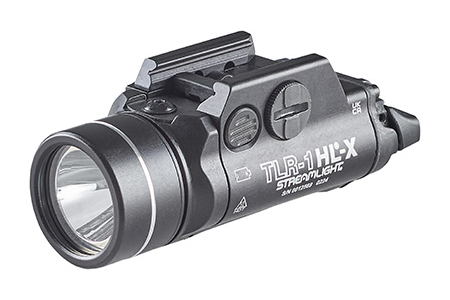 Emergency response time reduced by 25%
Emergency response time reduced by 25%
Madrid invests in security
The increasing terrorism in the recent years, foremost the horrible bombings in 2004, led the city of Madrid to invest in their security installation and services.
A key lesson was that more than one major incident can happen simultaneously, and emergency assets may be needed in more than one place.
Different incidents may be related, or have nothing to do with one another—without a clear overall picture, it may be impossible to tell if there is an important pattern emerging.
This potential for complexity poses a significant challenge for emergency managers.
They not only need to coordinate activity, but also require a thorough understanding of everything happening in the metropolitan area so as to properly allocate limited resources to provide the best response to each incident.
In addition, proactive measures such as limiting access to impacted areas, or crowd and traffic control for public events, has to be included
in the mix.
In order to coordinate the services of the fire department, police department and Samur (service of ambulances and urgencies) more effectivly and to have a quicker intervention time, the city of Madrid decided to built a new control centre.
The Spanish control room company Floria Group completed the whole installation of the Centre of Emergencies of Madrid (CISEM), a project of the Community of Madrid in which Firemen, Police and Samur were
unified in an unique Control Room, in order to combine all their resources, co-ordinating all the imputs that entered by the
emergency European phone 112.
‘Video images coming from the traffic cameras can also be displayed.’
In this project Floria Group undertook all the functional and aesthetic aspects of the Control Room design and the integration of technology and services that were required for this operation.
Floria group carried out the project of functional and aesthetic distribution that after an analysis of needs and objectives, culminated in a Control Room where the capacity was increased with a bigger number of users, greater useful surface and the space planning of functional areas, so that an operative isolation was obtained, eliminating thus the acoustic contamination, noise reduction coatings, illumination, compartmentation of areas, and equipment of technical furniture.
Floria Group designed and executed all the necessary aspects to obtain an atmosphere of optimal work with a high degree of aesthetic.
One of the most relevant areas of this Control Room was the eyevis display system integrated by Floria Group in close collaboration with the manufacturer eyevis.
A videowall formed by 44 rear projection cubes, Type eyevis EC-67-XC-DL, in a 11 x 4 configuration, performing the state of the art DLP™ technology.
This great screen of approx 15m in length and 4m in height, allows
the monitoring of the processes of management and control of the
existing material and human resources in all the Municipal Firemen
Stations, as well as a just in time listing of the interventions in course.
Another area of the Eyevis videowall displays the situation of the events and also the real situation of the vehicles that are taking part on it, by means of GPS technology.
This representation is made over a digital picture of the Municipality of Madrid or over a layer of street guide, including additional information on a digital photography of the Municipality of Madrid or on a layer of street guide in which it has additional information on the constructions
and avenues.
Video images coming from the traffic cameras can also be displayed. The management of the whole system is made from a computer that incorporates the most modern processors, and in case of a failure in any of the components, the system is able to detect it and to pass the control to another system that is in operation.
The redundancy of the system is not only for the equipment; it has a true replica of the Eyevis videowall that is working on another physical backup videowall.
IBM Business Partner Indra, a leading regional systems integrator specialising in the public sector, teamed with IBM to provide the integrated, service-oriented IT infrastructure that would make CISEM a reality, along with needed business process transformation to enable coordination among all of the stakeholders.
Because each of the first responder agencies had its own communication technology, a common mobile infrastructure had to be deployed.
Most vehicles, from police cars to ambulances to fire engines, are equipped with mobile wireless computers or PDAs that are connected to CISEM.
The mobile infrastructure is critical; it provides true interoperability among the various agencies and also enables a two-way interchange of information—which gives managers vital, on-the-scene input that helps them develop a better understanding of what is happening in the field.
The effective coordination of responders depends on reliable
communications, so close attention was paid to creating a reliable way to keep all agencies in touch.
A multilayered, redundant communications infrastructure links to existing telephony systems, VoIP, satellite communications, a private radio network and 3G wireless networks to ensure continuous communication.
IBM WebSphere Everyplace Connection Manager provides seamless, reliable, secure access to CISEM resources by automatically selecting the best available network and encrypting all communications.
IBM Tivoli Directory Integrator adds an additional layer of access security.
CISEM’s need to maintain consistency across all emergency resources makes the rapid development, integration and uniform rollout of information and applications essential, so IBM helped build a flexible, powerful SOA platform to enable it.
New information flows and business processes are built and managed using IBM WebSphere Integration Developer and IBM WebSphere Process Server. Dissemination to field units takes place quickly and easily, thanks to IBM DB2 Everyplace and IBM WebSphere Everyplace Deployment, with an underlying support layer that includes IBM
WebSphere MQ and IBM WebSphere Transformation Extender for system messaging and data formatting.
This robust software platform helps CISEM managers adapt to fast-changing needs without disruption to vital services—a key capability in fulfilling their core mission of protecting the public.
The combination of forward-looking system design and endto- end integration gives emergency managers in Madrid the tools needed to not only deal with today’s threats, but also handle rapidly evolving situations and technologies as they emerge. Any sensor input—video, data or voice—from any source can be readily incorporated into the data stream and accessed by anyone who needs it.
Situational awareness is now at an unprecedented level. Not only do commanders at CISEM understand the full situation, but those in the field are also made aware of the status of other teams and resources.
This single, unified view of status and events reduces confusion and enables far faster and more effective decision making.
Managers are now better able to deploy the right assets the first time, reducing response time by 25 percent. Perhaps most significant, though, is the entirely new dimension that CISEM has given to emergency management.
Commanders are now able to understand how complex and/or multiple incidents affect the entire region, and can allocate and deploy emergency resources in a truly coordinated and effective manner that takes into account all of Madrid’s needs, not just those of a single incident.











